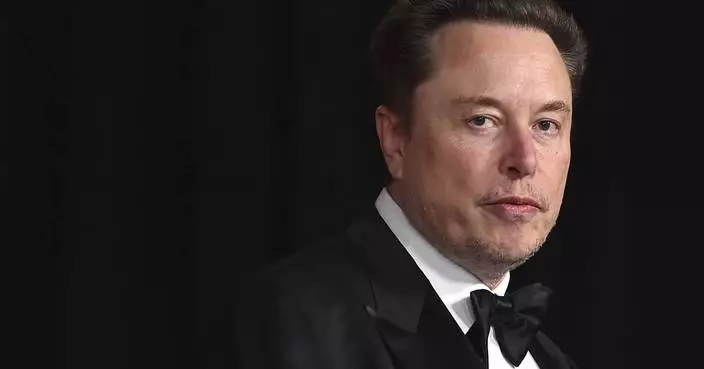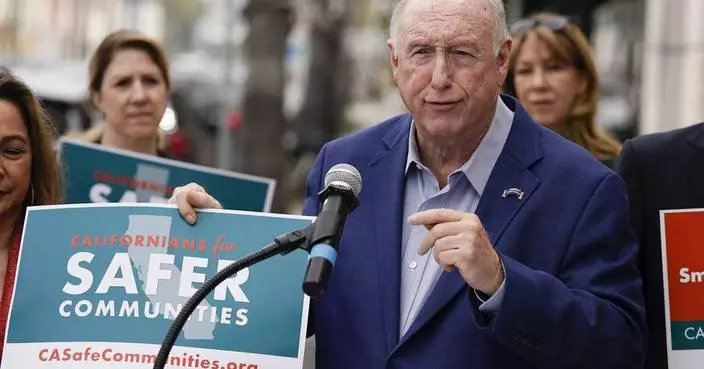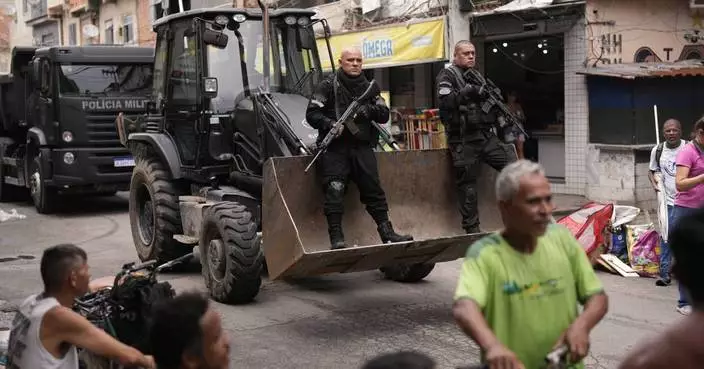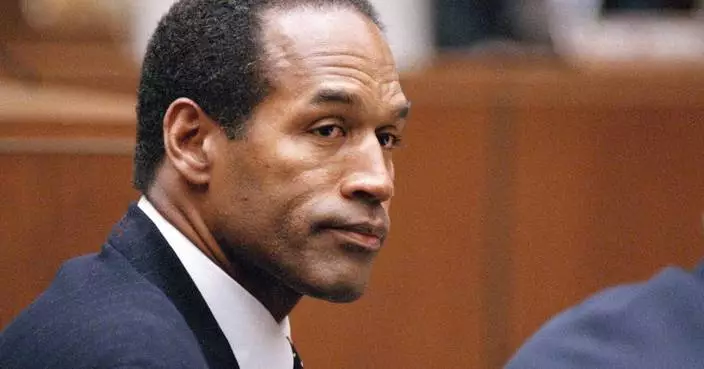Blind and deaf people got a chance to embrace the spirit of the World Cup together with the help of miniature football pitches in Sao Paulo on Monday.

Brazil soccer fan Carlos Junior, who is both deaf and blind, experiences the World Cup match between Brazil and Mexico with the help of an interpreter who uses tactile signing and a model soccer field in Sao Paulo, Brazil, Monday, July 2, 2018. Junior’s love of soccer and his way of following the World Cup moved many in Latin America’s largest nation after a friend posted a video of Junior following Brazil’s group stage game against Costa Rica. (AP Photo)
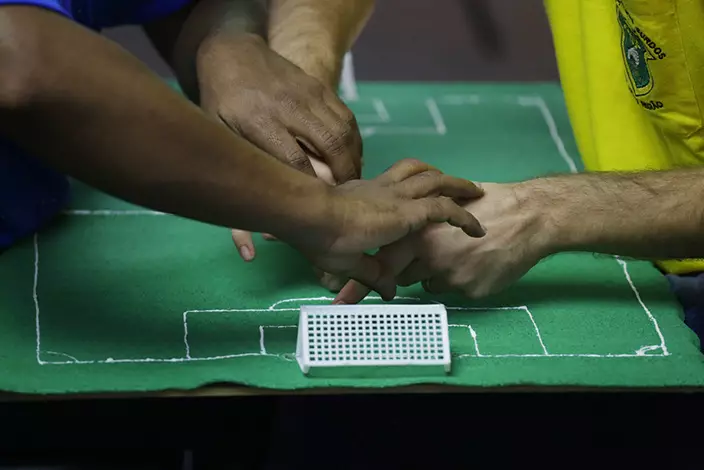
Brazil soccer fan Carlos Junior, left, who is both deaf and blind, experiences the World Cup match between Brazil and Mexico with the help of an interpreter who uses tactile signing and a model soccer field to recount the game, in Sao Paulo, Brazil, Monday, July 2, 2018. The system is this: Junior places his hands on the interpreter’s. One hand represents the ball, the other the player who has possession. The interpreter moves his hands around the model field to indicate the action. Meanwhile, another interpreter draws on Junior’s back, communicating which team and even which player (by tracing the player’s number) has the ball. The interpreter can also note fouls, yellow or red cards, blocks and saves. (AP Photo)
Blind people were guided by deaf interpreters, who held their hands and moved them around on a miniature football pitch showing them what was happening on the field.
Click to Gallery
Brazil soccer fan Carlos Junior, left, who is both deaf and blind, experiences the World Cup match between Brazil and Mexico with the help of an interpreter who uses tactile signing and a model soccer field to recount the game, in Sao Paulo, Brazil, Monday, July 2, 2018. The system is this: Junior places his hands on the interpreter’s. One hand represents the ball, the other the player who has possession. The interpreter moves his hands around the model field to indicate the action. Meanwhile, another interpreter draws on Junior’s back, communicating which team and even which player (by tracing the player’s number) has the ball. The interpreter can also note fouls, yellow or red cards, blocks and saves. (AP Photo)
Brazil soccer fan Carlos Junior, who is both deaf and blind, prepares to leave his home with the help of his father Carlos Santana, who carries a model soccer field that will be used to help him follow the live broadcast of the World Cup match between Brazil and Mexico, in Sao Paulo, Brazil, Monday, July 2, 2018. At 14, Carlos Junior's vision began to deteriorate, and he was fully blind by 23, however he continued to cheer for his beloved Sao Paulo Football Club with the help of his father. (AP Photo)
Blind and deaf people got a chance to embrace the spirit of the World Cup together with the help of miniature football pitches in Sao Paulo on Monday.
Brazil soccer fan Carlos Junior, left, who is both deaf and blind, experiences the World Cup match between Brazil and Mexico with the help of an interpreter who uses tactile signing and a model soccer field to recount the game, in Sao Paulo, Brazil, Monday, July 2, 2018. The system is this: Junior places his hands on the interpreter’s. One hand represents the ball, the other the player who has possession. The interpreter moves his hands around the model field to indicate the action. Meanwhile, another interpreter draws on Junior’s back, communicating which team and even which player (by tracing the player’s number) has the ball. The interpreter can also note fouls, yellow or red cards, blocks and saves. (AP Photo)
Blind people were guided by deaf interpreters, who held their hands and moved them around on a miniature football pitch showing them what was happening on the field.
The Brazil soccer fan Carlos Junior, who is both deaf and blind, celebrates at the end of the match between Brazil and Mexico with the help of an interpreter who uses tactile signing and a model soccer field to recount the passes, goals and fouls of the "Selecao" during the 2018 soccer World Cup in Sao Paulo, Brazil, Monday, July 2, 2018. (AP Photo)
Fans could be seen watching Brazil cruise to victory over Mexico 2-0.
Brazil soccer fan Carlos Junior, who is both deaf and blind, prepares to leave his home with the help of his father Carlos Santana, who carries a model soccer field that will be used to help him follow the live broadcast of the World Cup match between Brazil and Mexico, in Sao Paulo, Brazil, Monday, July 2, 2018. At 14, Carlos Junior's vision began to deteriorate, and he was fully blind by 23, however he continued to cheer for his beloved Sao Paulo Football Club with the help of his father. (AP Photo)
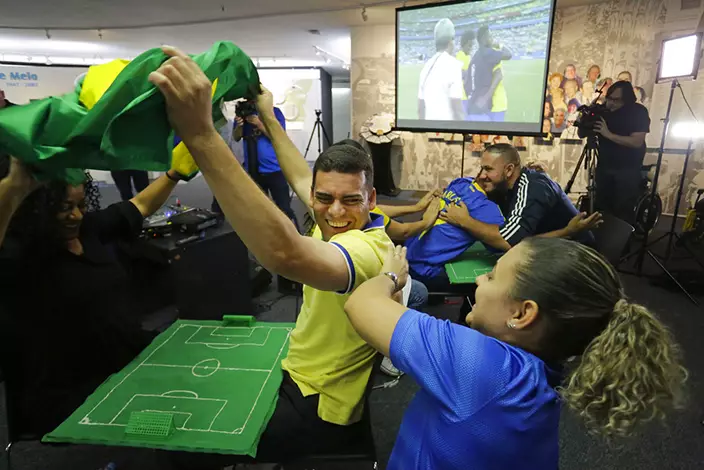
Deaf and blind soccer fans celebrate Brazil's 2-0 victory over Mexico, after interpreters using tactile signing and a model soccer field, shared with them the events of the World Cup game, in Sao Paulo, Brazil, Monday, July 2, 2018. Like fans all over soccer-mad Brazil, deaf and blind soccer fans followed every move the national team made. (AP Photo)
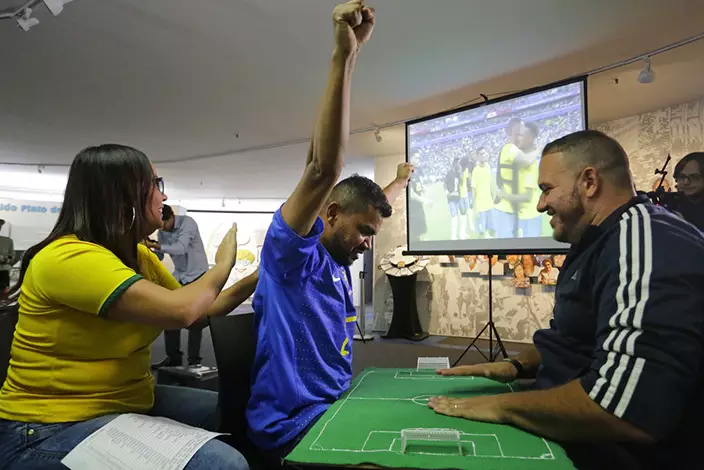
The Brazil soccer fan Carlos Junior, who is both deaf and blind, celebrates at the end of the match between Brazil and Mexico with the help of an interpreter who uses tactile signing and a model soccer field to recount the passes, goals and fouls of the "Selecao" during the 2018 soccer World Cup in Sao Paulo, Brazil, Monday, July 2, 2018. (AP Photo)
Fans could be seen watching Brazil cruise to victory over Mexico 2-0.
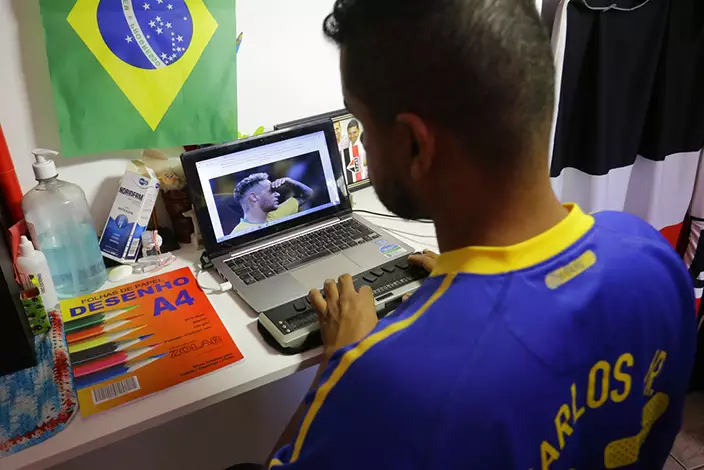
Brazil soccer fan Carlos Junior, who is both deaf and blind, uses a braille display to read soccer news as he prepares to leave his home to follow the World Cup match between Brazil and Mexico in Sao Paulo, Brazil, Monday, July 2, 2018. On Monday, Junior and a handful of other people with sight and hearing losses gathered at a cultural center in Sao Paulo to follow the game with the help of interpreters. (AP Photo)
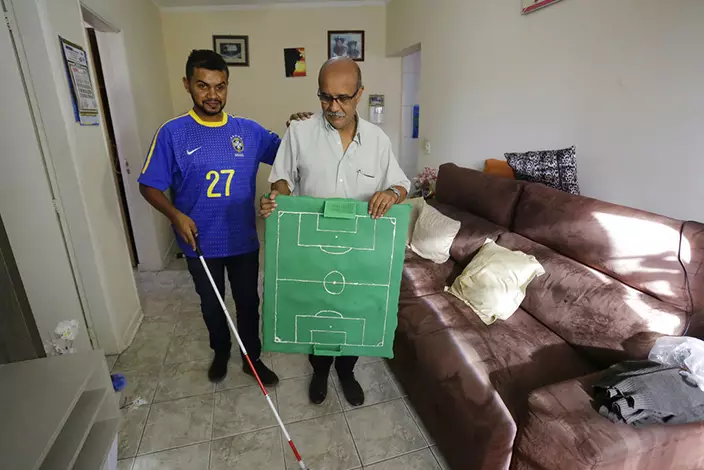
Brazil soccer fan Carlos Junior, who is both deaf and blind, prepares to leave his home with the help of his father Carlos Santana, who carries a model soccer field that will be used to help him follow the live broadcast of the World Cup match between Brazil and Mexico, in Sao Paulo, Brazil, Monday, July 2, 2018. At 14, Carlos Junior's vision began to deteriorate, and he was fully blind by 23, however he continued to cheer for his beloved Sao Paulo Football Club with the help of his father. (AP Photo)
SAO PAULO (AP) — President Luiz Inácio Lula da Silva on Thursday announced the creation of two new Indigenous territories for Brazil, bringing the total number of new reserves during this term to 10.
The Cacique Fontoura reserve will be in Mato Grosso state and the Aldeia Velha territory will be in Bahia state. They will cover a combined total area of almost 132 square miles (342 square kilometers).
Speaking at a ceremony in Brasilia, Lula's said Indigenous peoples should be patient as he seeks to fulfill his pledge of creating 14 new territories.
Lula's predecessor, Jair Bolsonaro, had encouraged widespread development of the Amazon — both legal and illegal — and made good on his pledge to not demarcate a single centimeter of additional Indigenous land.
Lula took office in 2023 pledging to change that, but Indigenous rights activists hoped he would move faster. Last year, he demarcated six territories in April and two more in September.
The Brazilian president said during his speech that the latest two new territories would not be enough. He cited legal issues for the delay in setting aside additional lands.
“I know you have some concern because you were expecting six Indigenous lands. We decided to authorize two, and that frustrated some of our friends,” Lula said, standing next to his Indigenous peoples minister, Sônia Guajajara, who wore a traditional yellow feather headdress. “I did this so I wouldn't lie to you. It is better to solve the problems instead of just authorizing it.”
The four envisioned Indigenous territories that were not authorized are occupied by farmers who have ownership rights to those lands, Brazil's government said.
Indigenous leader Dinamam Tuxá told journalists he was “partially happy.”
“Every new Indigenous territory is a victory,” Tuxá said.
Last year, Brazil’s Supreme Court ruled to enshrine Indigenous land rights in a case brought by farmers seeking to block Indigenous peoples from expanding the size of their territorial claims.
The court rejected a legal theory arguing the date that Brazil's constitution was promulgated — Oct. 5, 1988 — should be the deadline for when Indigenous peoples had to have already either physically occupied land or be legally fighting to reoccupy it.
Several lawmakers in Brazil's Congress are still pushing to revive that theory and fit it into legislation.
Indigenous rights groups argued the concept of the deadline is unfair, saying it does not account for expulsions and forced displacements of Indigenous populations, particularly during Brazil’s two-decade military dictatorship.
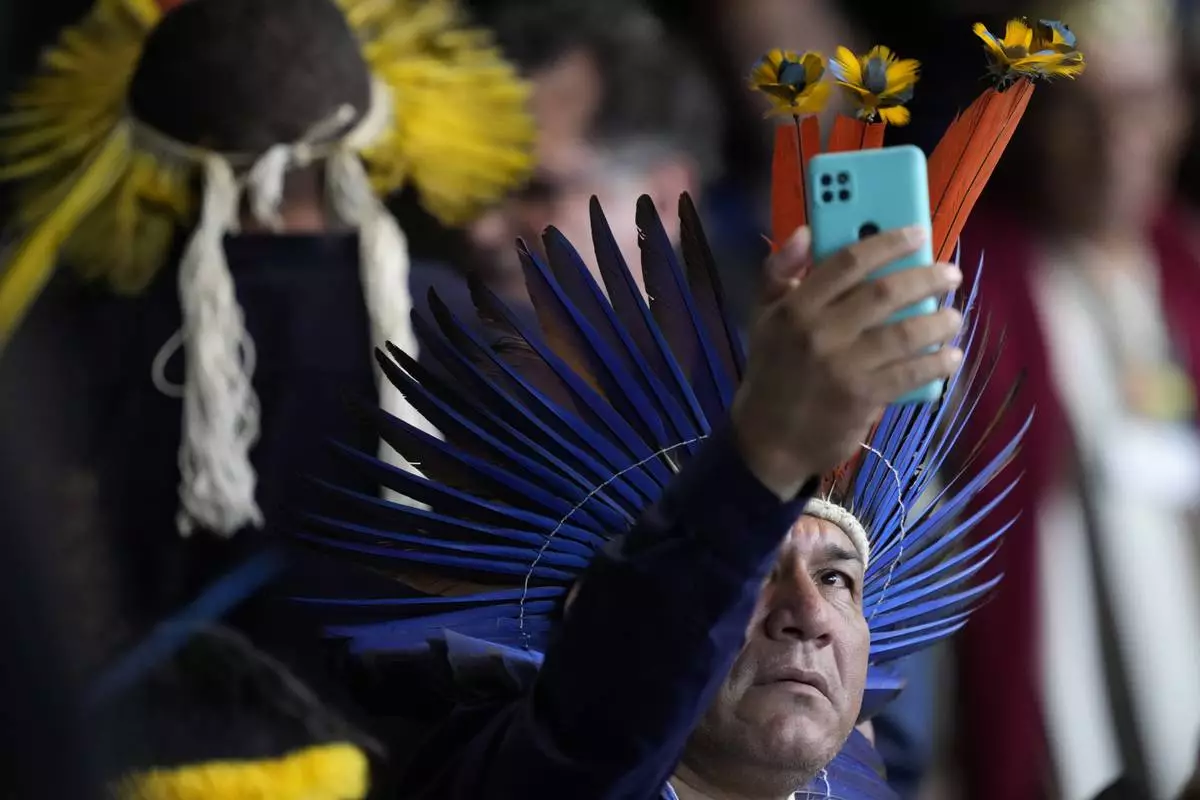
An Indigenous representative takes a photo with his cell phone as he waits for the start of the closing ceremony of the 1st Ordinary Meeting of the National Council for Indigenous Policy, in Brasilia, Brazil, Thursday, April 18, 2024. The council, dissolved in 2019, was revived in 2023. (AP Photo/Eraldo Peres)
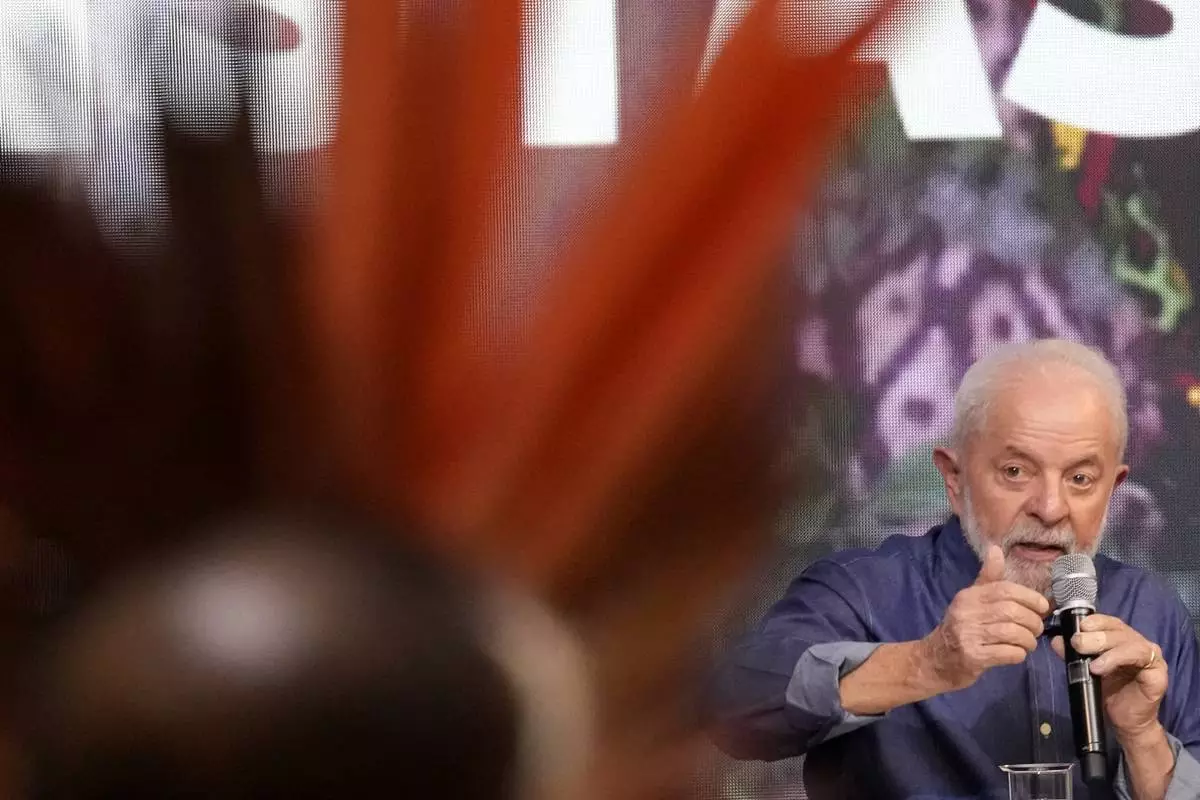
Brazil's President Luiz Inacio Lula da Silva speaks during the closing ceremony of the 1st Ordinary Meeting of the National Council for Indigenous Policy, in Brasilia, Brazil, Thursday, April 18, 2024. The council, dissolved in 2019, was revived in 2023. (AP Photo/Eraldo Peres)

Brazil's President Luiz Inacio Lula da Silva and Minister of Indigenous Peoples Sonia Guajajara arrive to the closing ceremony of the 1st Ordinary Meeting of the National Council for Indigenous Policy, in Brasilia, Brazil, Thursday, April 18, 2024. The council, dissolved in 2019, was revived in 2023. (AP Photo/Eraldo Peres)












